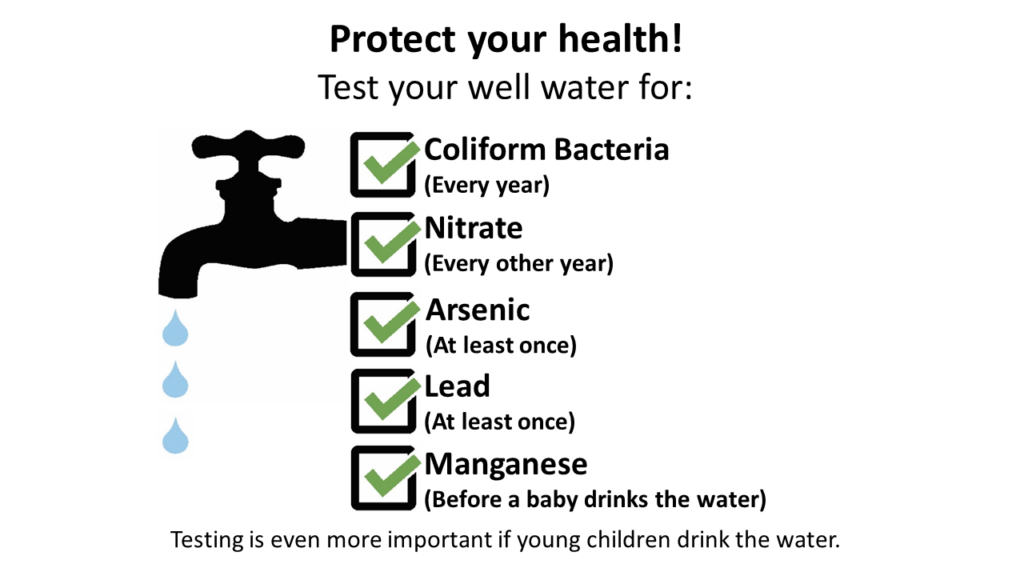
Testing your well water is the only way to detect most of the common contaminants in Minnesota groundwater; you cannot taste, see, or smell most contaminants. Minnesota Department of Health recommends testing for:
- Coliform bacteria every year and any time the water changes in taste, odor, or appearance. Coliform bacteria can indicate that disease-causing microorganisms may be in your water.
See Bacterial Safety of Well Water. - Nitrate every other year. Bottle-fed infants under six months old are at the highest risk of being affected by levels of nitrate higher than 10 milligrams per liter in drinking water.
See Nitrate in Well Water. - Arsenic at least once. About 40 percent of wells in Minnesota have arsenic in the water. Drinking water with arsenic in it for a long time can contribute to reduced intelligence in children and increased risks of cancer, diabetes, heart disease, and skin problems.
See Arsenic in Well Water. - Lead at least once. The well and water system may have parts that have lead in them, and that lead can get into drinking water. Lead can damage the brain, kidneys, and nervous system. Lead can also slow development or cause learning, behavior, and hearing problems.
See Lead in Well Water Systems. - Manganese before a baby drinks the water. High levels of manganese can cause problems with memory, attention, and motor skills. It can also cause learning and behavior problems in infants and children.
See Manganese in Drinking Water.
Citation: https://www.health.state.mn.us/communities/environment/water/wells/waterquality/ironbacteria.html
